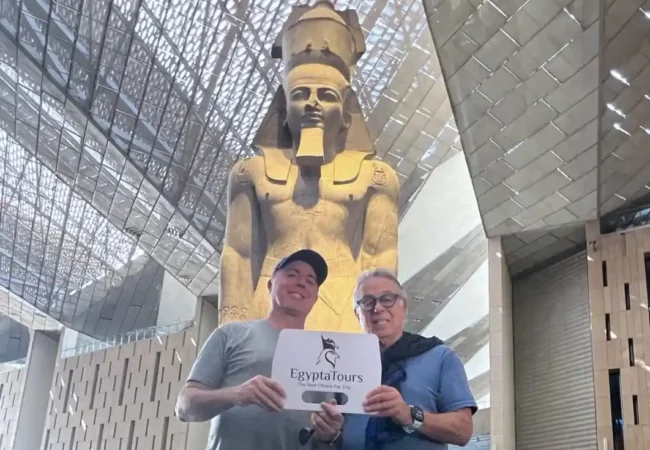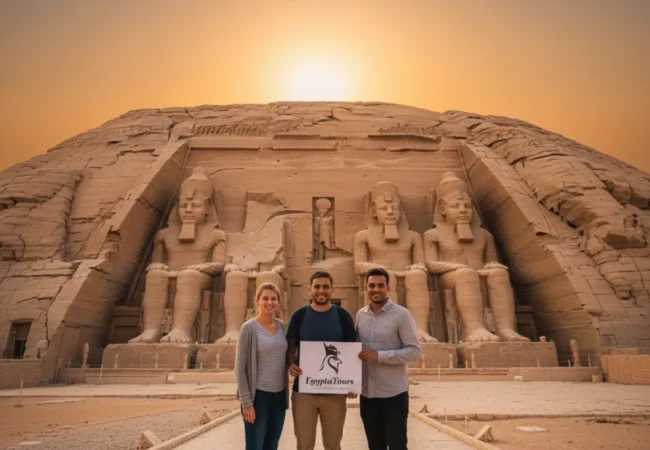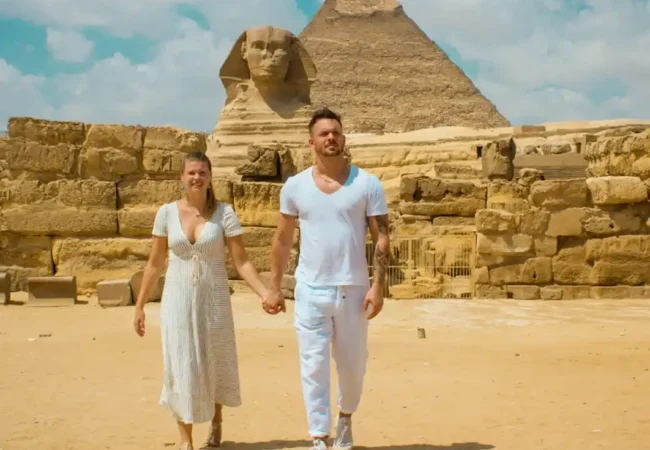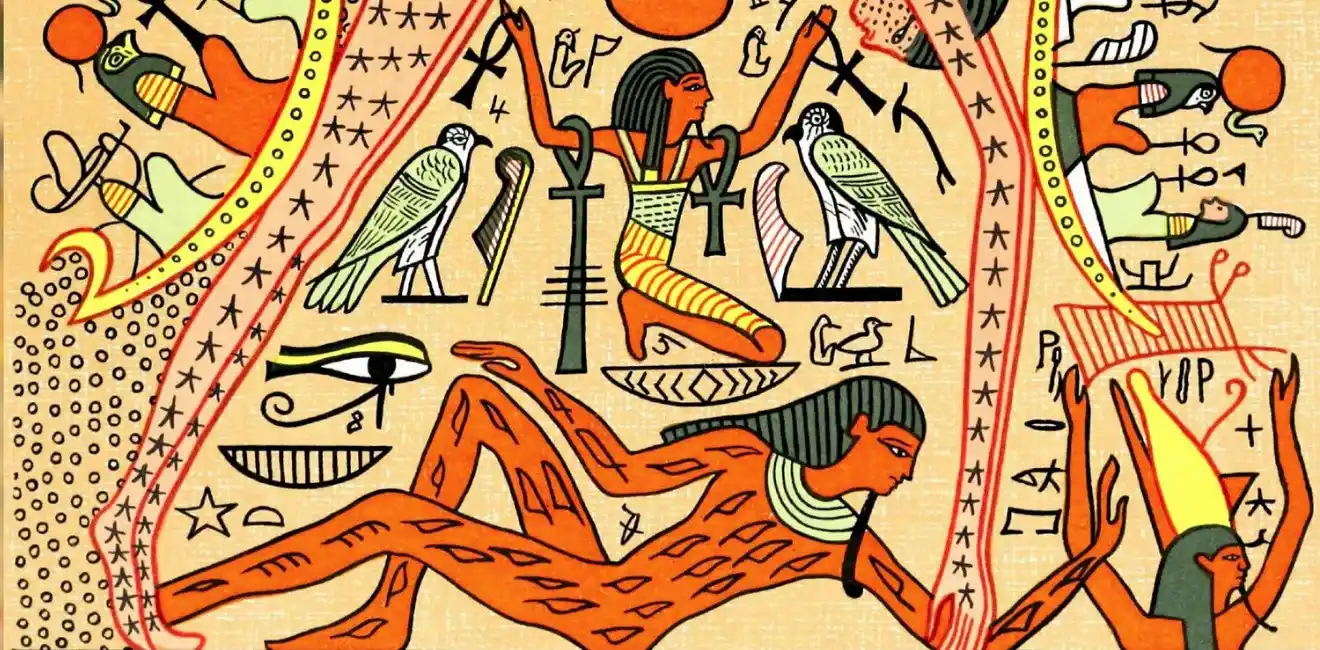
Ancient Egyptian Coffins
Ancient Egyptian coffins are considered prominent symbols of the Pharaonic civilization. They were not merely burial boxes for the dead, but rather embodied the ancient Egyptians’ beliefs about life after death making them a priceless archaeological treasure.
Come with me to learn about the secrets of coffins in ancient Egyptian life.
Ancient Egyptian coffins are among the most prominent evidence reflecting the development of religious and artistic thought among the ancient Egyptians. They were not merely means of preserving the body after death they played an important role in ensuring immortality and providing spiritual protection for the deceased during their journey to the afterlife.
The ancient Egyptians believed that preserving the body was of utmost importance for the soul to return to it. For this reason coffins were meticulously designed and exceptionally important in terms of function and beauty.
Coffins varied in shape and differed according to eras and social classes. Sometimes they were rectangular and sometimes anthropoid especially during the medieval and modern periods of the Pharaonic era.
The materials used included wood limestone, granite, and even gold in some cases for royalty and the elite. The coffins were decorated inside and out with symbolic drawings and hieroglyphic texts from the Book of the Dead as well as images of protective deities such as Osiris, Anubis, and Isis.
Types of Pharaonic Coffins
The types of Pharaonic coffins varied significantly reflecting the class and religious differences and artistic developments that ancient Egypt witnessed throughout the ages. Ancient Egyptian coffins were not simply boxes for containing corpses; they held profound spiritual symbolic, and social significance.
Pharaonic coffins can be classified into several main types based on shape material, and decoration.
Here are some types:
- Among the oldest types are rectangular coffins made of stone or wood which were prevalent in the Old Kingdom and were often decorated with simple engravings.
- Later, anthropomorphic coffins appeared shaped like the human body particularly the face, to enhance the connection between the soul and the body. Their decorations became more complex over time.
- Nested coffins placed one inside the other like layers were also popular especially among kings and nobles. These coffins sometimes numbered up to four or five layers each decorated with a unique artistic style. Tutankhamun’s coffins are a prominent example of this type with one layer made of pure gold.
Names of Coffins in Ancient Egypt
In ancient Egyptian coffins acquired exceptional importance and were given several names according to the era function, and beliefs associated with them. The most prominent of these names in the ancient Egyptian language was “qnt,” which refers to a coffin made of stone or wood and intended to preserve the body.
The word “an” (an) also appears in some texts as a symbol of the body’s eternal abode indicating the coffin’s connection to the concept of sanctity as a “house of eternity.”
Choosing a name for a coffin was not a routine process; rather it reflected the profound religious and philosophical aspects of ancient Egyptian culture. The ancient Egyptians considered the coffin a key part of the funerary rituals that ensured immortality.
Therefore the names of coffins often carried connotations such as protection preparation for the afterlife, and the transition to the world of Osiris, the god of the dead who played a central role in their conception of the afterlife.
What are the Coffin Texts?
The ancient Egyptian Coffin Texts are a collection of spells and religious texts written on the sides of coffins during the Middle Kingdom specifically between 2055 and 1650 BC.
These texts represent a significant development in funerary religious thought moving from being restricted to royalty in the Pyramid Texts to becoming accessible to a wider segment of the population including high-ranking officials priests, and members of the middle class.
These texts were written in either hieroglyphic or hieratic script and were often inscribed on the inner surface of the coffin sometimes on its outer sides or on the shroud wrapped around the mummy. The texts were not for decoration, but rather served a crucial religious and magical role in ensuring the immortality of the soul.
The ancient Egyptian coffin texts display a great linguistic and intellectual richness and reflect the Egyptians’ profound understanding of the concept of resurrection and eternal life.
They also represent a valuable resource for researchers studying the development of religious beliefs offering a detailed look at the relationship between man and the gods the fear of mortality, and the eternal desire for immortality.
The Symbolism of Ancient Egyptian Coffins in Funerary Belief
Ancient Egyptian coffins were not merely wooden boxes for the preservation of the body they represented a fundamental element of the ancient Egyptian funerary belief.
They believed that the body was the seat of the soul and must be protected to ensure resurrection and immortality. Therefore ancient Egyptian coffins were carefully designed and decorated with sacred symbols and texts such as the Pyramid Texts and Coffin Texts, to protect the deceased during their journey to the afterlife.
The coffin was often made of wood or stone and decorated with religious scenes and prayers that guided the spirits and protected them from evil. Thus, coffins became a bridge between the earthly life and the eternal life in ancient Egypt.
The Evolution of Ancient Egyptian Coffin Design Through the Ages
Ancient Egyptian coffins witnessed significant developments in design and function throughout the various historical periods. In the Old Kingdom coffins were simple and often undecorated while in the Middle Kingdom they evolved to include intricate interior carvings and religious texts.
Over time coffins began to take on more human forms especially in the New Kingdom where they were designed in the shape of a human body with the features of the deceased.
The Egyptians also used a variety of materials such as wood stone, and sometimes gold were used for the pharaohs and the elite. This development reflects religious and social changes making ancient Egyptian coffins a unique artistic and spiritual record.
Materials Used in the Construction of Ancient Egyptian Coffins
The ancient Egyptians used a variety of materials in the construction of ancient Egyptian coffins depending on the social class and status of the deceased. Wood was the most commonly used material especially sycamore and cypress, but the pharaohs and the elite preferred precious stones such as basalt and granite for their coffins.
In some cases gold, silver, and lapis lazuli were used to decorate the coffins of kings. The coffin was not merely a vessel it was a complete work of art embellished with engravings and bright colors representing deities and religious symbols.
This diversity has contributed to the emergence of ancient Egyptian coffins as one of the most important testaments to the craftsmanship and religious thought of Pharaonic Egypt.
The Role of Ancient Egyptian Coffins in Funeral Rituals
Ancient Egyptian coffins played a central role in funerary rituals as burial was not merely a routine process, but a complex ritual filled with religious symbols.
The coffin was carried in a funeral procession led by priests and priestesses, and spells and prayers were recited over it to protect the soul from evil spirits in the afterlife.
The coffin was often placed within a tomb containing several inner coffins ranging from the outer coffin to what is known as the mummy coffin.
This multiplicity reflects the desire to provide multiple layers of protection for the deceased. Therefore, the presence of ancient Egyptian coffins is one of the most prominent indicators of the importance of death and immortality in the lives of ancient Egyptians.
Decorations and Religious Texts on Ancient Egyptian Coffins
Ancient Egyptian coffins were distinguished by their rich decorations and intricate religious texts which were used not only for decoration but also for the spiritual protection of the deceased.
The interior walls of the coffin were covered with incantation texts such as the “Coffin Texts” or “Book of the Dead“, which included prayers to ensure overcoming obstacles in the afterlife.
The exterior decorations included religious scenes depicting deities such as Osiris, Isis, and Anubis as well as symbols such as the Eye of Horus and the Feathers of Justice.
These symbols were not trivial they carried profound meanings related to belief in resurrection and the afterlife. Therefore, ancient Egyptian coffins represented an illustrated book for safe passage into immortality.
Conclusion
Ancient Egyptian coffins were more than just caskets for storing corpses they reflected the depth of belief the genius of art, and the immortality of ideas in the ancient Egyptian psyche. Through their inscriptions, materials, and spells we can today read entire chapters of a history that believed in life after death and ingeniously embodied it.
Every coffin discovered is a key to the secrets of a civilization that continues to fascinate the world to this day.
FAQS
How were ancient Egyptian coffins made?
Ancient Egyptian coffins were made of wood or stone, and their surfaces were covered with a layer of plaster decorated with religious inscriptions and spells. Craftsmen relied on simple tools to craft them taking religious symbolism into account. They were often designed in a human form to protect the soul.
How did the ancient Egyptians bury their dead?
The Egyptians prepared the dead by mummifying them then wrapped the body in pure linen and placed it in a decorated coffin. Religious rituals were performed including the recitation of spells offerings, and burial of the deceased in a prepared tomb to ensure a safe journey to the afterlife.
What are the facts about coffins in ancient Egypt?
The facts about coffins in ancient Egypt reveal the depth of religious symbolism. They were not merely wooden or stone boxes they were sacred instruments carefully designed and inscribed with magical texts and drawings to protect the deceased and ensure their safe passage to the afterlife.
































